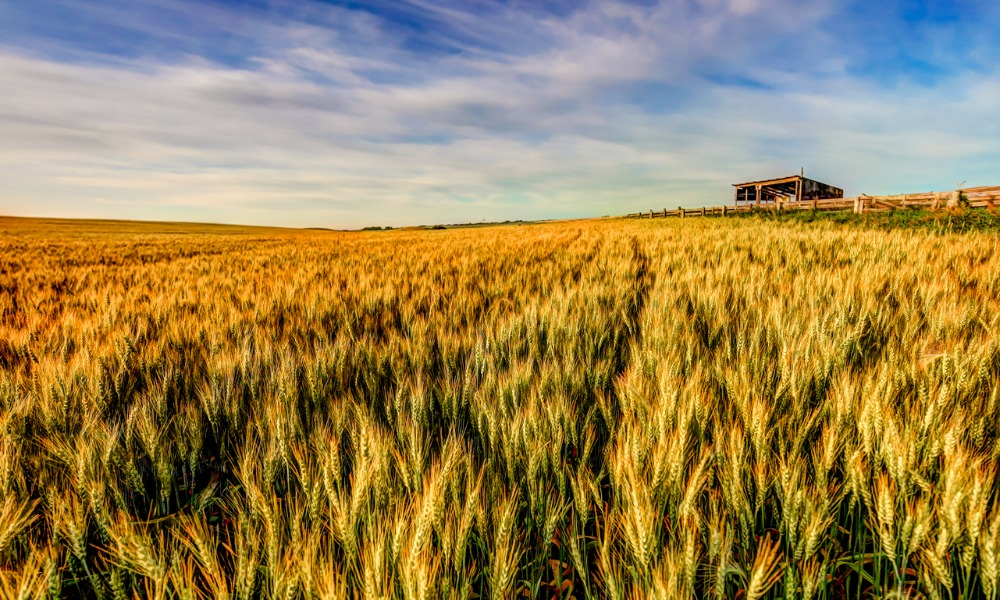Director of Veripath Partners explains economic, demographic, and ESG tailwinds blowing in favour of agriculture investing

For a lot of investors trying to read the economic tea leaves, comparisons between the current environment and the stagflation pressure cooker of the 1970s might seem like a stretch. But if you ask Stephen Johnston, the similarity is definitely there.
“Back then, you had high interest rates and a very high inflation rate, which meant effectively you had negative real rates,” said Johnston, the director of Veripath Partners, a Canadian firm specializing in row-crop farmland investment. “Now today, you have low inflation rates, but you have even lower interest rates. So once again, we’re seeing negative real rates.”
Today’s environment also echoes the ‘70s, he said, in terms of central banks’ response to economic crisis. Back then, the U.S. central bank funded massive fiscal deficits through an extensive bond-buying campaign; to provide life support for economies choked off by the pandemic over the past year and a half, central banks at G7 countries have also run considerable deficits as a share of GDP through bond buying. That wholesale push to increase the money supply has made inflation a front-and-centre issue for investors.
“What’s unique about the last year is that central banks admitted they were directly monetizing government debts,” Johnston said. “You could argue they’ve been doing it for 20 years, but now they’ve crossed the Rubicon; they admit philosophically that there’s nothing to prevent them from doing that, and that’s alarming a lot of investors. So now they’re saying, ‘I want some inflation insurance.’”
Some investors might immediately look to gold as a haven investment, while others might seek safety in houses and other forms of property. But after analysing the historical data, Veripath Partners found that Canadian farmland is a strong source of potential inflation protection.
Using data from Statistics Canada, they determined that for years when real rates were lower than 4%, farmland has been up 97% of the time, with an average appreciation of 11.3% in an up year. That behaviour is asymmetrical; during years when real rates are above 5%, farmland went up only 27% of the time.
“In the 1970s, farmland went up by around 550% in nominal terms,” Johnston said. “In Canada, farmland went up 275% in real terms, and it was one of the only assets to outpace the consumer price index, which speaks to its diversifying benefits.”
Those leaps in performance, he said, make farmland a very potent solution against the portfolio-corroding effects of negative real rates. After years or decades of running with portfolios that are very unhedged to inflation, many investors will find it hard to reconfigure their entire portfolio with that in mind. But with a modest 5% to 10% allocation to farmland, an investor can potentially offset the losses they might see in their stocks, bonds, and real estate.
Several secular macroeconomic trends developing around the world also make farmland an appealing investment. Most obviously, there’s the three Fs – food, feed, and fuel – representing basic human necessities. The demand for those can only grow as populations in the developing world swell and mature, which makes investments in productive farms and the commodities they yield even more vital.
But another less obvious one is the need to address water scarcity. Focusing on China and India, which together represent 3 billion people, Johnston said the two nations make up roughly 40% of the world’s population, but only 20% of the world’s freshwater. At the same time, they’re both on a path toward industrialization, which crowds out the use of water for agriculture.
“It’s more profitable to use a ton of water to produce microchips than it is to use that water to grow food,” he said. “So as industrializing countries start to ramp up, they go through a dietary transition which increases their consumption of crops, but they also increasingly use their domestic water for industry, which creates an incremental requirement for them to import. When Canada exports a ton of wheat to China, it’s really as if it exported 1,000 tons of water.”
According to Johnston, Canada has among the most competitively priced farmland in the developed world on a productivity-adjusted pricing basis. And from an ESG perspective, Western Canadian zero-till farmland is able to capture material amounts of carbon; depending on the soil type, that equates to between 0.3 tonne per acre up to 0.5 tonne per acre in Prairie soils. Veripath’s holdings, he said, is around 90,000 acres of Canadian row-crop farmland spread across several active portfolios.
“Based on our analysis, we’ve found that a $10-million investment in our funds, whose underlying portfolios include about 70% zero-till soil captures about 1,200 tonnes of carbon annually, which is about 260 passenger vehicles’ worth,” he said. “So investors in our funds get access to discounted productivity pricing, an ability to reach carbon-neutrality goals they may have, and hedge against negative real rates, which is a nice combination.”



